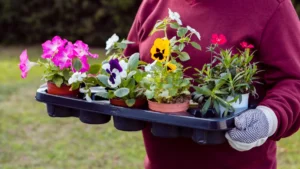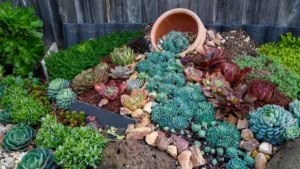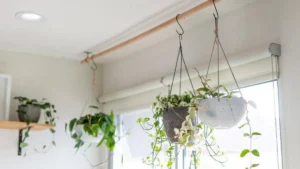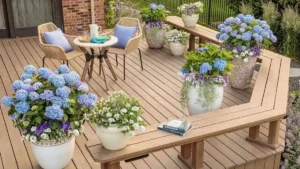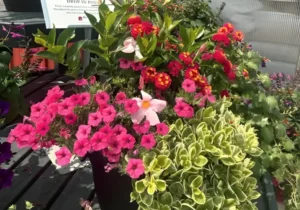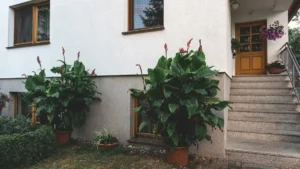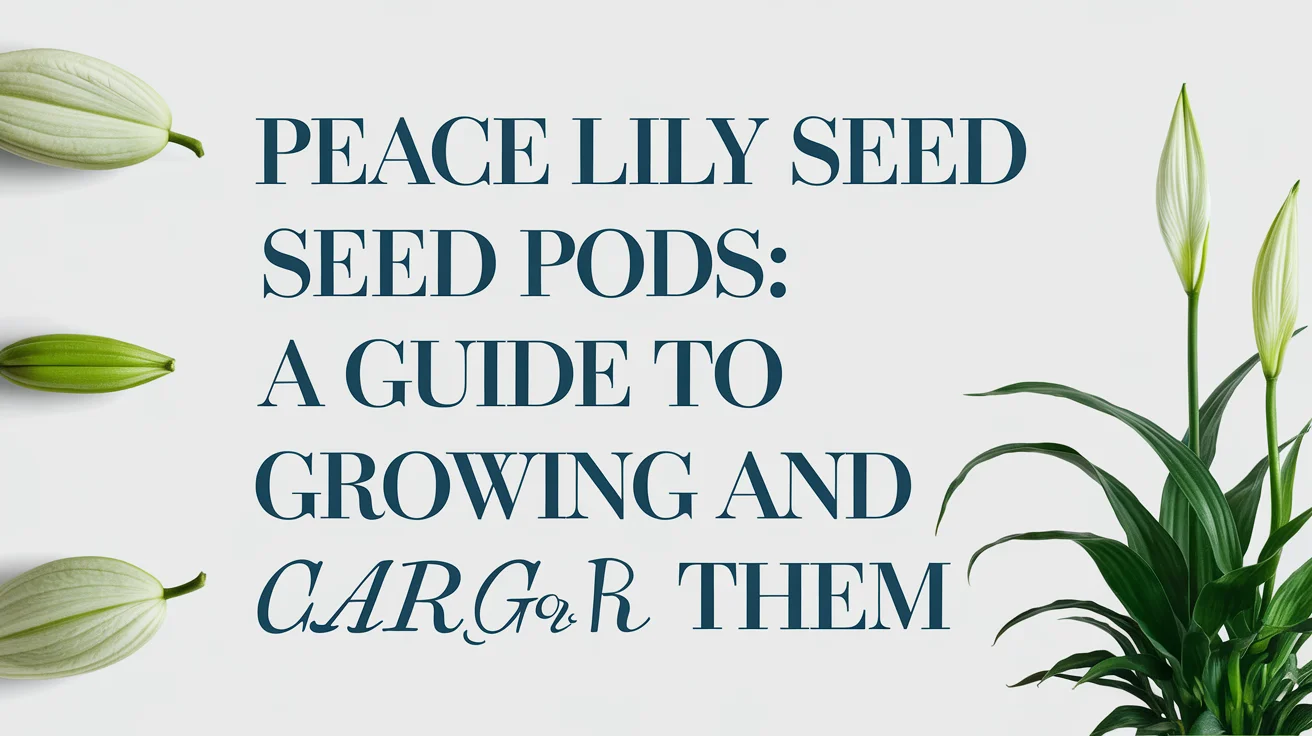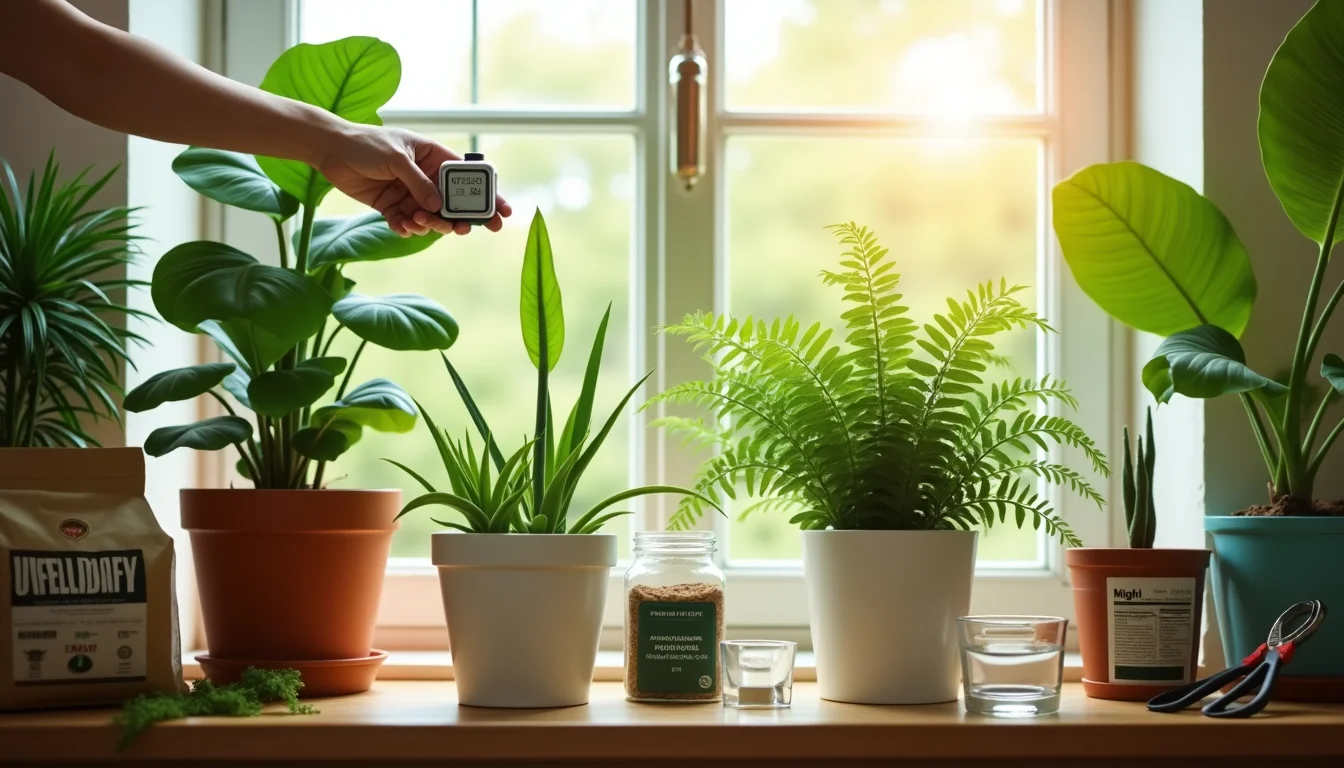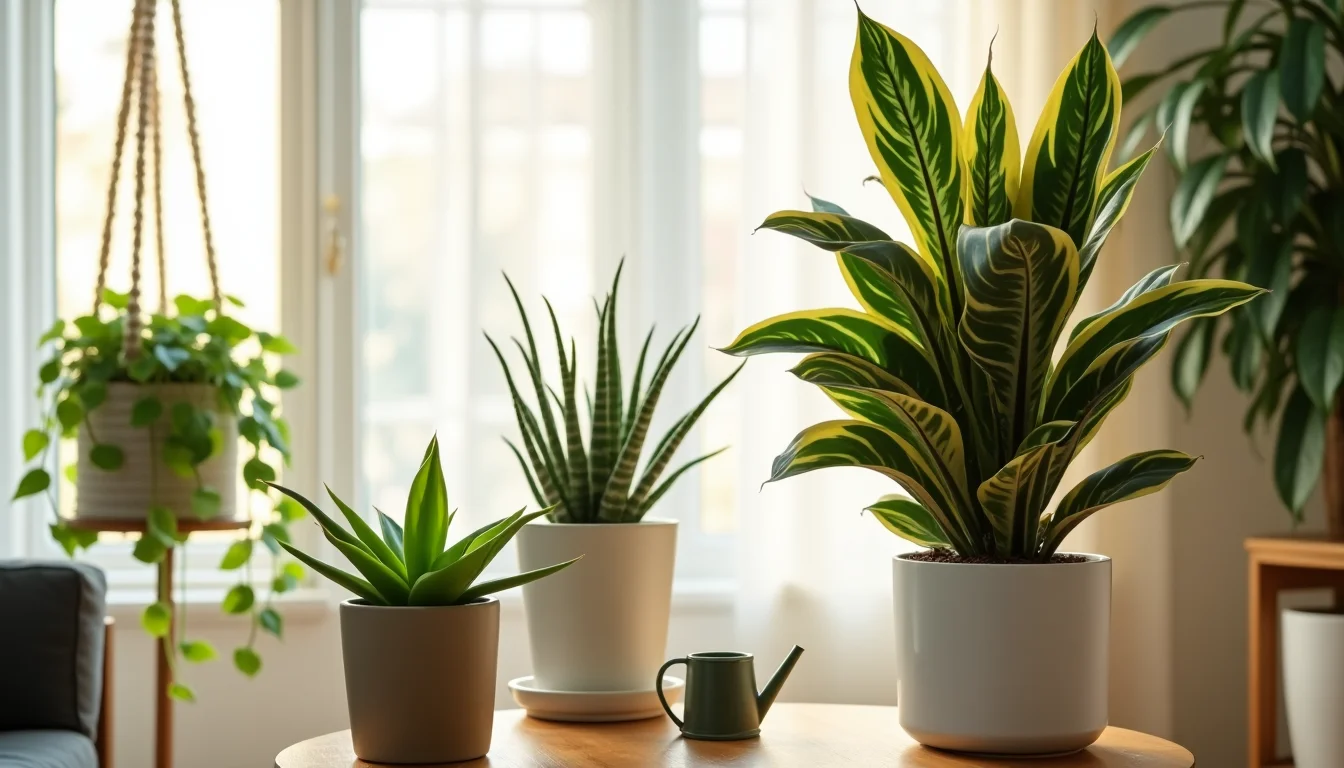If you’ve noticed your peace lily drooping leaves, you’re not alone. This common issue can stem from various factors, and understanding the underlying causes is crucial to restoring your plant’s vitality. In this guide, we’ll explore the reasons behind why peace lily leaves droop and offer practical solutions to help you revive your plant and keep it thriving. Whether it’s related to watering habits, environmental conditions, or nutrient needs, we’ve got you covered with expert tips to ensure your peace lily remains lush and healthy.
Causes of Drooping Leaves in Peace Lilies
1: Inadequate Watering
Watering is the major cause of droopy leaves in peace lilies. Symptoms of both overwatering and underwatering are similar.
Solution:
Underwatering: Reach into the soil up to one inch with your finger to check if it is moist enough. You should water thoroughly until excess water drains out from the bottom.
Overwatering: The plant roots begin rotting and eventually leads to falling down of leaflets. Make sure that your pot has good drainage system, leave a top layer of soil dry between watering and don’t allow standing water near your plant.
Temperature Stress
Peace lilies thrive in stable temperatures. Extreme heat or cold temperatures can stress plants resulting in their leaves wilting.
Solution:
Optimal Temperature: Keep indoor temperature at 65-80°F (18-27°C).
Avoid Drafts: Do not place peace lily near air vents, windows or heaters where the temperature fluctuates frequently due to draughts.
Low Humidity
As tropical plants, peace lilies require a humid environment. During winter especially, low indoor humidity results in wilted foliage with tips turning brown.
Solution:
Increase Humidity: Use a humidifier or spray some mist on peace lily foliage regularly so as to increase humidity around it. Alternatively put the plant on a tray filled with water and pebbles for increased levels of moisture content.
Group Plants: By grouping your peace lily together with other houseplants, you can enhance the humidity of your space.
Nutrient Deficiency
Without the required nutrients, a peace lily may end up becoming weak and start developing drooping leaves due to various reasons.
Solution:
Balanced Fertilization: Feed balanced water-soluble fertilizer every six to eight weeks during spring and summer (growing season). Reduce feeding in fall and winter time.
Root Bound
When a peace lily becomes root bound, it means that its roots have outgrown the pot and are tangled thus preventing efficient absorption of water and essential nutrients by the plant.
Solution:
Repotting: Repot your peace lily every 1-2 years into a slightly larger pot with fresh well-draining soil to ensure there is enough room for root growth.
Preventive Measures for Healthy Peace Lilies
Consistent Care Routine
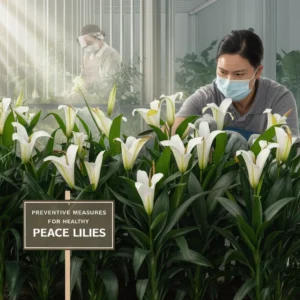
For prevention of wilting leaves on peace lilies, it is necessary to maintain consistent care routine.
Solution:
-
-
Regular Watering: Keep watering your peace lily whenever soil top inch feels dry. Let the soil always be moist but not overly wet.
Humidity Maintenance: Maintain high humidity levels around your plant especially during dry seasons.
Stable Temperature: Avoid temperature variations for this plant from one extreme to another within short periods of time.
Regular Fertilization: Apply balanced fertilizers to your plant during growing period only.
Timely Repotting: Prevent root binding by repotting when necessary
-
Early Detection
Periodic checking up on your live pea will indicate any problems that may arise hence possible interventions before they become too severe.
Answers:
-
- Leaf Quality: Observe whether leaves are wilting, yellowing or turning brown.
-
- Soil Moisture: Check that the soil is neither too dry nor too wet.
-
- Root Health: Check for rotten roots and overcrowded conditions when repotting plants.
Conclusion
Causes of drooping in peace lilies include inadequate water supply, temperature shock, low humidity, nutrient deficiency and being root bound. By knowing these causes, you can be able to bring your peace lily back to life and make it healthy again. Regular monitoring and a consistent care routine will maintain the health and beauty of your peace lily. Your peace lily will continue to thrive if you pay attention to its needs. It will always be a beautiful addition in any home where it is given the right care.
This essay provides a unique and comprehensive approach on how to deal with drooping leaves in peace lilies. It has been semantically optimized by focusing on offering pragmatic solutions.
Frequently Asked Questions
Why are the leaves of my peace lily drooping?
- Drooping leaves in peace lilies can be caused by various factors, including inadequate watering, temperature stress, low humidity, nutrient deficiency, or the plant being root-bound. Identifying the root cause is essential for addressing the issue effectively.
How can I tell if I’m overwatering or underwatering my peace lily?
- To check, insert your finger about an inch into the soil. If the soil feels dry, your peace lily may need water. Overwatering is often indicated by yellowing leaves and mushy roots. Ensure your pot has good drainage to avoid standing water, and let the topsoil dry slightly between waterings.
What is the ideal temperature for peace lilies to prevent drooping?
- Peace lilies thrive best in temperatures between 65-80°F (18-27°C). Avoid placing them near drafts, air vents, or heaters, as temperature fluctuations can cause stress and lead to drooping leaves.
How can I increase humidity for my peace lily indoors?
- To boost humidity, you can use a humidifier, mist the leaves occasionally, or place the pot on a tray filled with water and pebbles. Grouping peace lilies with other plants also creates a humid microenvironment, which helps prevent wilting due to dryness.
When should I repot my peace lily, and why is it necessary?
- Repot your peace lily every 1-2 years or when it becomes root-bound. If the roots are crowded, they won’t absorb water and nutrients efficiently, causing drooping. Moving the plant to a slightly larger pot with fresh, well-draining soil will help it grow healthily.





